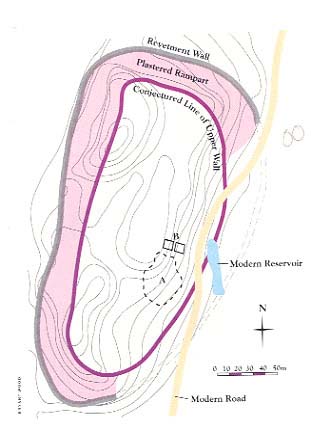Image Details

Bryant Wood
City IV at Jericho—the city that all scholars agree was violently destroyed—was a fortified enclave. The city’s outer defenses consisted of a stone revetment wall at the base of the tell that held in place a high, plastered rampart. Above the rampart on top of the tell was a mudbrick wall which served as Jericho’s city wall proper. The approximate line of this wall is indicated by the dashed line. In the 1930s, British archaeologist John Garstang excavated a residential area, marked “A,” just west of the perennial spring that supplied the city’s water and which now fills the modern reservoir. (A significant portion of the tell was destroyed to make way for the modern road.) Signs of a fiery destruction and his dating of the remains led Garstang to conclude that the Israelites had indeed put the city to the torch about 1400 B.C.E., in harmony with the Biblical narrative.
Kathleen Kenyon, Garstang’s successor at Jericho, excavated the area marked “B.” Her conclusions dated Jericho’s destruction to about 1550 B.C.E.—150 years earlier than Garstang’s date. This destruction, she concluded, was far too early to ascribe to the Israelites. By the time the Israelites appeared on the scene, she argued, there was no walled city at Jericho.
